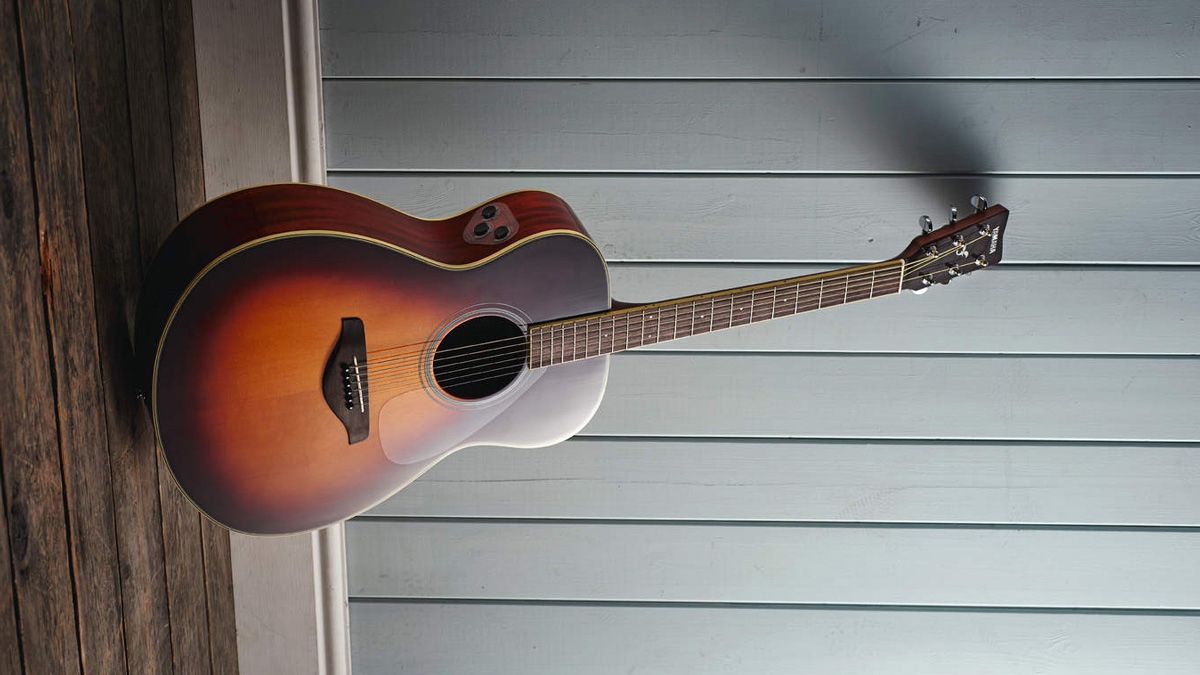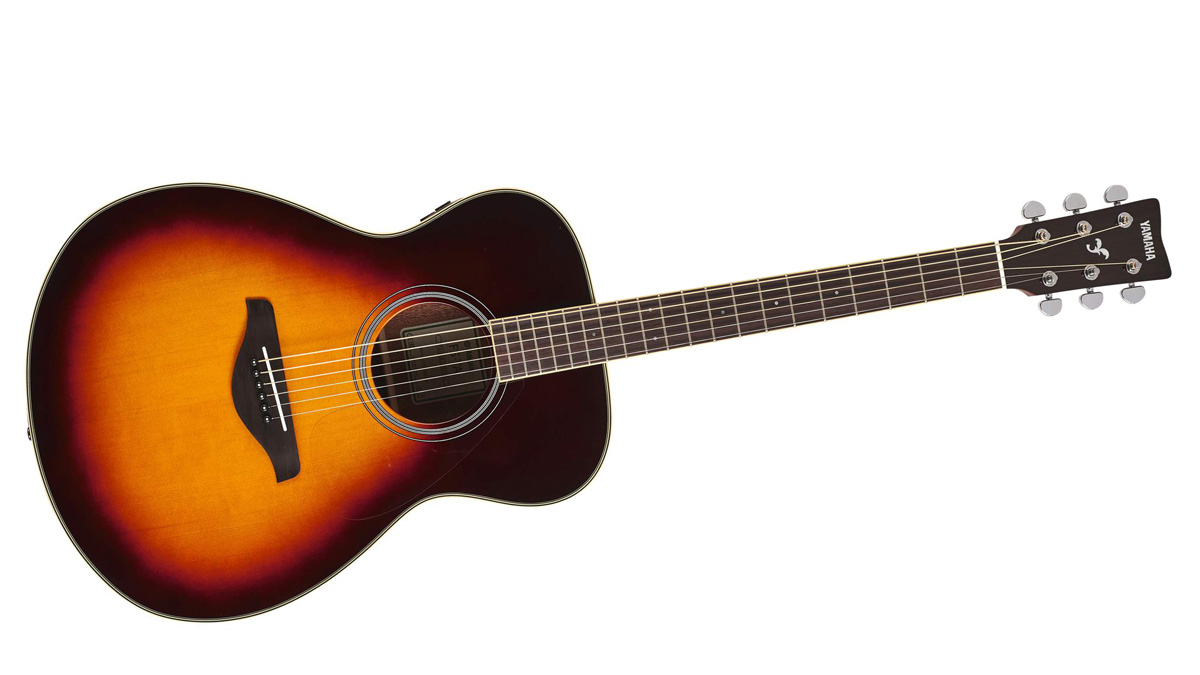MusicRadar Verdict
So good it’ll put a smile on your face!
Pros
- +
Superb sounds.
- +
Innovative.
Cons
- -
Costly.
MusicRadar's got your back
Certain things will make us smile here at MusicRadar, and Yamaha’s TransAcoustic is one of them.
That is, once we’d got over the shock of hearing reverb and chorus effects coming out of an acoustic guitar that wasn’t plugged into anything. But how?
If you peek inside the soundhole, just under the top there are the electronics of an actuator, and this responds to the vibrations of the strings as you’re playing. These vibrations are pumped back through the guitar’s body, moving the air inside and around it and... bingo! Controllable reverb and chorus sounds come from inside the guitar! It takes a little while to get your head around, and then you’ll be smiling. Because it’s really that good.
This technology first surfaced on two Yamaha models in 2016 - the all-solid wood LL-TA and LS-TA - but the guitar on review here is based on Yamaha’s F Series instead (there’s also the dreadnought-esque FR-TA). The more reasonable price point reflects laminate back and sides, rosewood instead of ebony ’board and bridge, and there’s no gigbag. The lack of the latter is a shame because, as we’ll find out, this is certainly something you could use in a live situation.
Certain things will make us smile here at MusicRadar, and Yamaha’s TransAcoustic is one of them
This concert size is a very nice player - action is low, no buzz thanks to a good setup - and its bright voice is measured by a welcome warmth in the low-end. It’s a good foundation for the effects here, activated by holding down the middle of three rotary controls for a few seconds.
That’s also your level control, applicable for both when you’re unplugged or playing through a PA. The other two controls select the level of room or hall reverb and chorus. We kept going back to the hall reverb because it’s such an inspiring place to be - organic and cinematic. Like an instant church around you, fingerpicking takes on a new drama.

The chorus needs a little more subtlety when it’s dialled in to prevent things getting too clinical and 80s. But balance it right and there’s a really useful tool for thickening rhythm parts.
It’s worth keeping in mind that the F Series model this is based on retails for £346. So, there’s no getting around the fact that you’re paying nearly double for the TransAcoustic technology and piezo. Whether that’s worth it for you can only really be decided by trying this unique experience.
We found it both addictive and inspiring to have the luxury of reverb and chorus on call wherever and whenever we wanted. This could be a superb creative tool, and the piezo here also represents the FS-TA’s character well when we plugged in, so there’s plenty of scope for live work with onboard effects too. The potential is all here for you to explore.
- More of the best Yamaha acoustic guitars

Rob is the Reviews Editor for GuitarWorld.com and MusicRadar guitars, so spends most of his waking hours (and beyond) thinking about and trying the latest gear while making sure our reviews team is giving you thorough and honest tests of it. He's worked for guitar mags and sites as a writer and editor for nearly 20 years but still winces at the thought of restringing anything with a Floyd Rose.
Brace yourself: Bryan Adams didn’t buy his first real six-string in a five and dime
“Nobody listens to one genre. I literally don’t know anybody who listens to one genre. You can be a fan of so many different artists at once”: Laufey on what Gen Z can teach the rest of us about how to appreciate music
Bon Iver - ranked: from Sable, Fable to For Emma, Forever Ago










